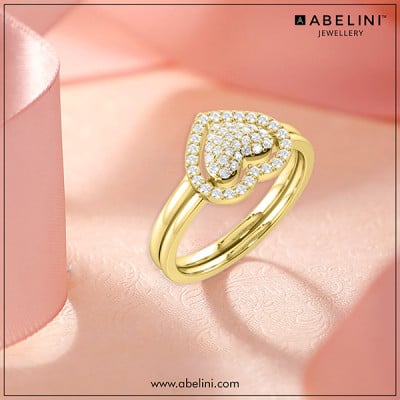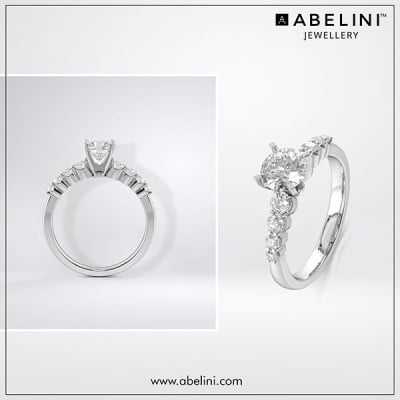How To Know If Jewellery Is Real Gold
11th November 2022 By Nilesh Rakholia
Quicklinks
How To Tell If Gold Is Real: 11 Ways to Tell if Gold Is Real
Before you purchase gold jewellery, you probably want to confirm its authenticity. If you’re wondering how to check if jewellery is real gold, there are tests that you can try. Different methods suit different types of jewellery, so we’ll run through some approaches and explain which strategies work for which types of jewellery. If you’re wondering “how can you tell if jewellery is real gold?”, keep reading.
Check For Hallmarks And Colouration
For American or European jewellery, check for the hallmark. Gold jewellery in these regions is required to have an identifying stamp showing the karat weight or percentage of gold. If your piece doesn’t bear a hallmark, it’s not genuine or has originated from outside these regions. If you see GP, GF, or GEP stamped on the piece, this isn’t a hallmark. It indicates the piece is gold-plated, gold-filled, or gold electroplate.
The colour can also give you a clue about how to tell if jewellery is real gold. Expect a metallic sheen and a yellow-orange colour for 24k gold, a buttery yellow colour for 18k, and a straw colour for 14k. Anything else could be fake.
Smell
Smell is an appropriate test for smaller pieces like earrings, pendants, or rings. Just as old coins leave a scent, so can cheap metals used to imitate gold. When your hands are slightly sweaty, hold the jewellery and then rub it between both hands. Afterwards, smell your hands. If there’s no clear scent, you’re dealing with real gold. If you detect a metallic smell, you’ve got fake gold, which is likely to be brass.
Discolouration
This method often won’t work with new pieces but can identify whether secondhand pieces are genuine. If the jewellery leaves marks on your skin, it indicates that it isn’t genuine gold. This method is useful for tightly-fitting jewellery such as rings and earrings. You can also try holding the jewellery for an extended period.
Neodynium magnets
Neodymium magnets are larger and more powerful than household magnets. They’re helpful if you need to know how you can tell if jewellery is real gold, and you can test any jewellery. Pure gold is not attracted to the magnet - just touch the jewellery with it and see what happens.
Some genuine gold chains and pendants have a clasp with a metallic spring that’s not gold. This might mean the magnet attracts the clasp but no other part. Use these magnets carefully because they’re extremely powerful and have the potential to cause injury.
Liquid foundation
You can also use a liquid foundation to test solid pieces, but this is less reliable than many other approaches. Apply liquid foundation and powder to your forehead and rub the jewellery across the area. The real thing will leave black streaks.
Lighters
A lighter can be convenient for checking whether jewellery is real gold. Hold your jewellery with metal pliers or hang it on a hook that won’t melt, then apply the flame to the surface for around one minute. Genuine gold will brighten in colour as the temperature increases, while fake gold will darken. If your jewellery is gold-plated, the heat will melt the thin layer of gold, exposing the metal underneath. Take care with this test and only use a small lighter rather than a larger source like a blowtorch.
Water
Another way to check your jewellery is with water density. This is effective for testing jewellery without damaging it. A simple version is to see if it floats – if it does, it’s not real. For a more accurate result, start by measuring your jewellery on a small and sensitive scale. Fill a vial that’s large enough to hold the jewellery with water, leaving some space at the top. Measure the water level, put your jewellery in, measure the change in water level, and calculate the difference.
Divide the weight of your jewellery by the difference in water level. This gives you a value for density. Genuine gold has a result of around 19. This test is only accurate for jewellery that’s alleged to be pure gold – other materials like gemstones can affect the results.
Ceramics
You can test your jewellery with unglazed ceramics, and the unglazed bottom of a piece of crockery is ideal. Drag your piece along the surface until it leaves a mark. A gold mark indicates gold whilst a dark mark means it's an imitation metal. This test is simple but you should do it carefully - it does risk damaging your jewellery. Small marks on your jewellery can usually be polished away.
Expert
Another way to check your gold is to consult an expert. A specialist gold dealer has the professional knowledge to assess whether jewellery is genuine. Dealers also have specialist testing kits that help provide accurate results. Some jewellers also offer this service.
X-rays
This is tough to try at home but x-rays are another effective way to test gold. Any gold item can be tested in this way without causing damage, including jewellery. X-rays cause items to release radiation, and the radiation that gold releases is different to any other, making it easy to identify.
Acid
Another option is using acid. A nitric test is recommended for scrap gold rather than jewellery because it can damage your pieces. It involves making a small scratch and adding a drop of nitric acid to it. Real gold won’t react but imitation jewellery usually turns green or leaves a milky substance on the surface.
A suitable version to try at home is testing with vinegar. Make a scratch, add a couple of drops, and wait for around 15 minutes. If there’s a colour change, it isn’t real gold. Before you try this, be aware that it can damage your jewellery, so think carefully about where to do the test.
Know How To Test For Genuine Gold
Gold jewellery is sought-after and that means that there are lots of imitation products on the market. If you want to be sure that your gold is a genuine article, there are a range of ways that you can test this. Try one of the methods we’ve suggested with your gold jewellery at home.

Article written by Nilesh
 Trustpilot
Trustpilot



